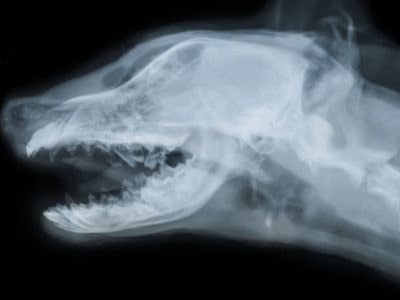Dog brain tumors are a serious and heartbreaking condition that affects many dogs. They are abnormal growths of cells in the brain that can interfere with the normal functioning of the nervous system. In this article, we will discuss the signs, symptoms, diagnosis, and treatment options for dogs with brain tumors, and provide guidance on when to euthanize them.

Key Takeaways
- Dog brain tumors are abnormal growths of cells in the brain that can cause various neurological symptoms, such as seizures, vision loss, behavioral changes, and difficulty walking.
- Dog brain tumors are diagnosed by tests such as MRI, CT scan, and biopsy, and can be treated by surgery, radiation, chemotherapy, or palliative care, depending on the type, location, and size of the tumor.
- Dog owners should consider euthanasia when their dog’s quality of life is severely compromised by the tumor, and when the pain and suffering outweigh the benefits of treatment. Some factors to consider are the dog’s age, overall health, prognosis, and personality.
Dog Brain Tumor When To Euthanize?
Dog brain tumor happens because of abnormal cells and irregular cell division. These tumours can also occur in the skull region, the cranial nerves, the pituitary gland, and the brain envelopes known as meanings.
While the dog is suffering from a brain tumour, it’s obvious you will think about how long will they survive. There is no specific timeframe but, the treatment for treating the tumour will give a rough timeline to the vet suggesting how long they may survive.
Now, the decision of when to euthanize entirely relies on the dog’s parents. They need to consult the vet and see how they can proceed with the procedure. But, to decide when to euthanize, one also needs to understand different aspects dog’s brain tumour in detail. Let’s get into it.
Dog brain tumour – Types
A brain tumour is a cancerous mass in your canine’s brain. It is also referred to as the cranial cavity. There are 2 types of brain tumours in dogs: primary and secondary.
- Primary brain tumours
This tumour happens from the actual brain tissue. This tumour may also include several different types of cancers such as – meningioma, choroid plexus papilloma, adenocarcinoma, glioma, and pituitary adenoma.
- Secondary brain tumours
In comparison to the primary tumour, the secondary tumours carry a more severe prognosis, because these cancers have already spread through different parts of your furry friend’s body.
They come from cancer cells of other parts and spread through metastasis or forming a nearby non-nervous tissue that spreads into the brain tissue. In addition, the secondary brain tumours include – hemangiosarcoma, mammary carcinoma and melanoma.
Symptoms
Symptoms of brain cancer in dogs vary as per the location of the tumour. You will observe the following signs when your dog is possibly suffering from a brain tumour:
- Pain in the neck or head
- Head weaving
- Difficulty in swallowing
- Hearing loss
- Less hunger
- Behaviour gets aggressive
- Reflexive behaviour is reduced
- Seizures and Tremors
- Panting
- Vomiting
- Weight loss
- Depression
The tumours are most typically seen in dogs over five years old. Some dog breeds often get diagnosed with the disease. Golden retrievers, Dobermans, and boxers are the ones who get diagnosed with such tumours.
Dog Brain Tumour: How Is It Diagnosed?

Generally, the more premature your dog’s brain tumour is diagnosed and detected, the chances of survival for your furry friend increase significantly. The basic methods for diagnosing and identifying brain tumours in dogs will include a CT scan, chest x-ray, or samples taken from your dog’s urine, blood, or spinal fluids.
The CT scan imaging test would confirm whether there is a brain tumour. If the results are not conclusive, then your vet could get the samples and establish the reason behind the seizures or any relative symptoms that your dog is exhibiting.
Further, before using anaesthetics on your dog, the vet conducts an X-ray examination of your dog’s chest. This helps in precisely deciding if the cancer cells originated outside the dog’s brain and later metastasized at that location. By this method, the vet is better informed on which treatment approach will resolve the issue.
The most common brain tumour is Meningioma. It’s common in both dogs and cats and that’s why you find more predictive information regarding this tumour in comparison with the others.
Signs that symptoms are getting worse:
Normally, seizures are the most evident signs of a brain tumour in your dog. There are different types of seizures and they begin after the dog hits five years mark. Behavioural deterioration is a possibility after the seizures begin.
Further, you will also start seeing your friendly dog become extremely aggressive. A dog who has high energy levels would surely become inactive, with slight tinges of vision loss. The symptoms will repeat and the condition will keep deteriorating.
In fact, when you see your dog losing their softness, appearing to move in circles (confusion), aggressive response when you touch its neck, and cannot swallow food or drink water, point towards one thing – the symptoms are getting worse.
Dog Brain Tumour – How Quickly Does it Elevate?
The rate at which cancer develops will depend on the location and the type of tumour your canine friend has.
For example, tumours in the brainstem can accelerate very fast if they impact your dog’s respiration. On the contrary, a small tumour in the forebrain remains undetected for months and you’ll most probably only notice a shift in your dog’s behaviour and then you may get diagnostics from the vet indicating the tumour.
Treatment for Dog Brain Tumor
The majority of brain tumour cases will need emergency treatment. This is necessary because as the tumour grows, it increases pressure on the brain causing neurological problems. Stopping seizures is the first priority in such situations.
In addition, the treatments include the insertion of an intravenous catheter, administering anti-seizure medications, and nursing care to gradually reduce the swelling in the brain.
Further, depending on the location of the tumour, the vet may use any of the following methods to treat the tumour. These ways are:
#1 Brain surgery
On the basis of the size and location of the brain tumour, a vet may perform a surgical procedure to remove the tumour. The dog is given general anaesthetic because the skullcap needs to be removed. Afterwards, the tumour is taken out and the remaining cancer cells are also taken care of using a chemo or radiation method.
Further, there are chances of side effects post-surgery. Also, there is no guarantee of the survival of your furry friend. They may die on the table or after a few days of the surgery.
#2 Radiation and Chemotherapy
In general, radiation and chemotherapy are the most widely used treatments for dealing with brain tumours. These treatments target the exact spot of the tumour and function accordingly. In fact, the rest of the body has no impact during this treatment. Still, there are chances of damaging some healthy tissues around the tumour.
#3 Medication (Palliative)
Dog suffers extreme pain and to reduce the swelling around the brain vets give some steroids to relieve some pain. In addition, they also use different medications to deal with such pain. However, these medications often come with some side effects. A dog’s thirst elevates along with its appetite.
In addition, you may see dogs frequently urinating. The medications are useful when there is no scope for other treatment, for instance, bring surgery. But, these medications at best, only extend a dog’s life by a couple of months. In short, the palliative method is for providing comfort to a dog or puppy for as long as possible.
When to Euthanize a Dog With Brain Tumour?
Regardless of whether you opt for a treatment or not, as a dog parent you still need to pick a time when to euthanize the dog. Because dogs with brain tumours have a lower life expectancy, especially if the prognosis is not good.

There is no cure for cancer and the tumour always keeps progressing in a way that impacts your dog’s health and shatters its mental state.
Yes, the decision to euthanize your furry friend is not an easy one, but, you have to discuss all the possible options with your veterinarian and choose the most suitable plan for the dog. So, if you are liking for the indications or signs that suggest that euthanasia is necessary, then here are they:
- Not eating: Dogs love to eat, often more than nearly anything else in their life. So, if your dog with a brain tumour stops eating for more than a couple of days, it means that they are not feeling well enough to eat. It also suggests their weakness and inability to execute the act of eating.
- Inability to walk: Some brain tumours can mess your dog up neurologically. Having said that, you will see your dog lose balance and mobility. So, when these symptoms advance to the point that a dog can barely walk or has trouble getting up or down from a position they risk other injuries.
- Difficulty in controlling control bladder/bowel movement: this situation arises because of less mobility or due to a state of dementia where one can’t remember anything. So, you will see your furry friend constantly having accidents.
- Pain: your furry friend will experience severe headaches simply because of the compression of the brain and the surrounding tissues. When this pain becomes extreme, it will have a drastic impact on their daily routine activities. After some time the medications also won’t work and it’s time to think about giving your dog the rest.
- Hurting themselves or others: your canine friend will exhibit some massive behavioural changes while suffering from a brain tumour. This mainly involves aggression. The aggressive nature is common in this condition but, this can endanger the lives of other people and animals in close proximity to them.
The decision to euthanize the dog is hard but, you’ll have to take it.
Now, before we conclude the article, let’s have a peek at some ways you can cheer your furry friend during these tough times:
- Emotional support – your furry friend will need your complete attention and support during these painful times. They are not aware of the situation, but, can sense the tension within. So, it becomes crucial you provide them with emotional support.
- Short walks – when suffering from the tumour, your canine friend will not feel active or physically fit enough to walk. But, if they can you should certainly consider a short walk. They won’t refuse unless they lose the capacity to get up at all.
- Toys and puzzles– if your dog barely walks, you can try diverting their mind from the pain using toys or different puzzles. For example, a ball treat – where you stuff some food within the ball, a dog toy ball – for playing, or simply a food puzzle. However, it’s crucial you consider their digestion health, because if their digestion is weak after the chemo, they will have difficulty digesting the food.
- Massage – giving your dog a massage will help your dog relax. In fact, this is one of the best ways to express your emotional support for them.
FAQs
How long do dogs live with a brain tumour?
For a primary brain tumour, survival chances range between four to six months with only anaesthetic care. The range extends for 6 to 28 months with radiation, chemo, or surgical procedure. However, dogs with secondary brain tumours do not survive for more than a month and some dogs don’t even get to live a month.
What are the final stages of a dog brain tumour?
There are 3 aspects which outline the final stage of a dog brain tumour. These are paralysis, coma and death. This may seem harsh but it’s the reality, especially if the diagnosis was done late. These 3 stages start once the dog shows signs such as – difficulty swallowing, voice change and inability to move their eyes.
Should a dog with a brain tumour be put to sleep?
When there is a case of a dog brain tumour it becomes to decide when to euthanize i.e. putting the dog into a comfortable sleep (death). But, the symptoms suggest that a dog goes through severe pain and putting them to sleep is probably the best option one can opt for.
How much does it cost to put down a dog?
On average, Euthanasia (euthanizing) the dog can cost between £80 to £200 in the UK. The cost of this procedure relies on different factors such as the dog’s weight, emergency vet or regular hours charges, pet Insurance, whether the treatment is done at home or at the vet, and communal or individual cremation.
Dog Brain Tumor When To Euthanize – Conclusion
Any dog who is suffering from a brain tumour has less life expectancy. The mere thought of having of euthanizing the dog can have a devastating effect on the dog owners’ mental state, but, it’s an inevitable outcome, especially if they wish to see their dog not suffer any further.
To make the decision, you must try not to refer to euthanizing as an act of cruelty, instead, see it as means of offering a peaceful rest to your dog ending its suffering. If you are looking for more clarity on the issue, you can refer to the professional guidelines that RCVS has set in place for the vets. These guidelines provide specific details on different aspects of euthanasia and how vets should approach it.



